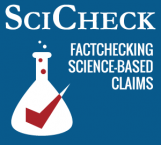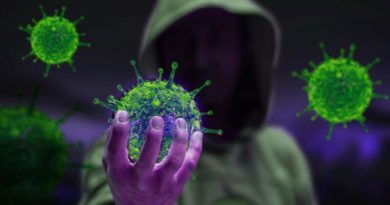Posts Mislead About COVID-19 Vaccine Safety With Out-of-Context Clip of FDA Official
SciCheck Digest
Given the extra scrutiny and large number of doses, reports of possible side effects to a vaccine safety monitoring system increased with the COVID-19 vaccines. The high number of reports does not mean the vaccines are unsafe, contrary to suggestions made by posts sharing a clip of a Food and Drug Administration official acknowledging the surge.

Full Story
The COVID-19 vaccines are remarkably safe and only rarely cause serious side effects. Despite the good safety record, many people opposed to vaccination continue to point to the government’s Vaccine Adverse Event Reporting System, or VAERS, to incorrectly suggest the COVID-19 shots are unsafe.

As we’ve explained before, VAERS is one of several vaccine safety monitoring systems the Food and Drug Administration and the Centers for Disease Control and Prevention use to identify safety problems with vaccines.
VAERS collects reports of health problems that occur after — but not necessarily because of — vaccination, with the goal of being able to quickly detect a safety signal, which can then be further investigated. The reports can be submitted by anyone and are not verified. The number of reports is known to increase with new vaccines, and the COVID-19 vaccines in particular had augmented reporting requirements.
Yet, the sheer number of unvetted reports to VAERS for the COVID-19 vaccines is once again being spun as something concerning by vaccine opponents. Posts on social media are sharing a clip of Dr. Peter Marks, the head of the FDA division that oversees vaccines, testifying before Congress on Feb. 15.
In the clip, Rep. Brad Wenstrup of Ohio, who is a podiatric physician, notes that as of mid-February, total reports to VAERS for the COVID-19 vaccines were “significantly higher than all other vaccines combined since 1990.” He then asks Marks if the government was “prepared for such an avalanche of reports to VAERS.”
Reusing Wenstrup’s “avalanche” language, Marks responds, “We tried to be prepared for that, but the avalanche of reports was tremendous.” He briefly refers to the staffing challenges the government experienced in trying to find enough people to review the VAERS reports, when the clip being shared on social media ends.
Later in his testimony, Marks said the staffing challenge was related to the review of the reports, since that is part of the evaluation of whether an adverse event might actually be caused by a vaccine. He also explained that the deluge of reports was partly due to the incredibly rapid rollout of millions of doses in a short period of time, and that reporting to VAERS after COVID-19 vaccination was highly encouraged.
“We were encouraging safety reporting because we felt we needed to know any potential adverse events so we could try to investigate and find out if there was something we were missing,” said Marks, who also noted in his opening remarks that “vaccines save the lives of millions of children and adults every year,” and that Americans “can rest assured that vaccines that are authorized or approved are safe and effective.”
But the clip doesn’t include those comments, and the posts don’t explain that.
Instead, the posts, which incorrectly refer to Marks as the FDA director, quote the “avalanche” statement or misleadingly imply the official had made some kind of compromising revelation about vaccine safety.
“FDA director admits to historic number of adverse event reports about COVID vaccines,” reads one popular post. It is suggestively captioned, “We warned everyone. Never forget that.”
Although the posts do not explicitly say the number of reports means the vaccines are unsafe, the implication is clear. Numerous responses to the posts show people misinterpreting the “avalanche” of reports as indicative of a safety problem. “Absolutely unacceptable,” one comment reads. “Why are they still pushing it the thing!!!!! They should be arrested immediately.”
“Dr. Marks was making clear that VAERS reports were not necessarily caused by the vaccine,” Cherie Duvall-Jones, a spokesperson for the FDA, told us in an email. “Additional analyses are required to determine causality, and the mere fact that an adverse event is reported does not indicate it was caused by the COVID-19 vaccine or that it was related.”
Sheer Number of VAERS Reports Not Concerning
As we’ve explained before, there are several reasons why reporting to VAERS following COVID-19 vaccination has been so high compared with other vaccines. This includes the large number of doses — as of last May, more than 676 million doses in the U.S. — over a relatively short period of time, including a rollout that was initially prioritized to older and higher-risk individuals, who would be more likely to have health problems anyway.
Health care providers are also required by law to report far more adverse events following vaccination with a COVID-19 vaccine than with other vaccines.
It’s well established that reporting to VAERS surges for any new vaccine — a phenomenon known as the Weber effect — and this has almost certainly been supercharged in the case of the COVID-19 vaccines, given the intense interest in these vaccines.
One clue that this increased reporting to VAERS is not concerning is that reporting is high across the board, regardless of the plausibility of an event being vaccine-caused.
“Every event, even those clearly unrelated to vaccines including for example animal bites, broken arms, and sunburn, is reported about an order of magnitude more for these vaccines in the pandemic than any time before,” Jeffrey S. Morris, director of the division of biostatistics at the University of Pennsylvania’s Perelman School of Medicine, explained on X, the platform formerly known as Twitter, in response to a post sharing the Marks clip.
High reporting in and of itself, then, is not a real safety signal. This is why VAERS data is analyzed and reviewed in particular ways, and used in conjunction with other safety monitoring systems, including those that are active rather than passive, as VAERS is, to identify true side effects.
“Active surveillance involves proactively obtaining and rapidly analyzing information occurring in millions of individuals recorded in large healthcare data systems to verify safety signals identified through passive surveillance or to detect additional safety signals that may not have been reported as adverse events to passive surveillance systems,” Duvall-Jones explained.
Indeed, VAERS was useful in helping to identifying myocarditis and pericarditis as the main serious side effects of the mRNA COVID-19 vaccines. These rare conditions, which refer to inflammation of the heart and its surrounding tissue, are most common in adolescent and young adult males after a second dose.
Editor’s note: SciCheck’s articles providing accurate health information and correcting health misinformation are made possible by a grant from the Robert Wood Johnson Foundation. The foundation has no control over FactCheck.org’s editorial decisions, and the views expressed in our articles do not necessarily reflect the views of the foundation.
Sources
“VAERS.” HHS. Accessed 23 Feb 2024.
McDonald, Jessica. “What VAERS Can and Can’t Do, and How Anti-Vaccination Groups Habitually Misuse Its Data.” FactCheck.org. 6 Jun 2023.
McDonald, Jessica. “Increase in COVID-19 VAERS Reports Due To Reporting Requirements, Intense Scrutiny of Widely Given Vaccines.” FactCheck.org. 22 Dec 2021.
“Assessing America’s Vaccine Safety Systems, Part 1.” Select Subcommittee on the Coronavirus Pandemic. U.S. House of Representatives. 15 Feb 2024.
Duvall-Jones, Cherie. FDA press officer. Email sent to FactCheck.org. 23 Feb 2024.
“COVID Data Tracker.” CDC. Last updated 10 May 2023
“Frequently Asked Questions (FAQs).” VAERS. HHS. Accessed 23 Feb 2024.
Morris, Jeffrey S. (@jsm2334). “Yes the avalanche of reports was amazing as we can see in the publicly available data from the website …” X. 16 Feb 2024.
“Selected Adverse Events Reported after COVID-19 Vaccination.” CDC. Accessed 23 Feb 2024.
“Clinical Considerations: Myocarditis and Pericarditis after Receipt of COVID-19 Vaccines Among Adolescents and Young Adults.” CDC. Accessed 23 Feb 2024.
This article has been archived for your research. The original version from FactCheck.org can be found here.


